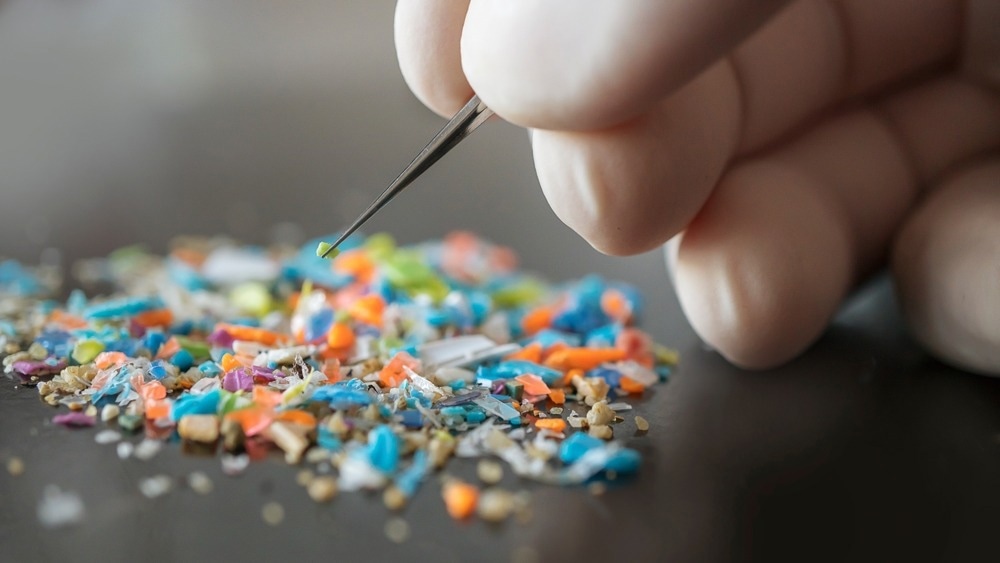Plastic micro- and nanoparticles are more concentrated in postmortem brain samples from 2024 than those from 2016
 Study: Bioaccumulation of microplastics in decedent human brains. Image Credit: SIVStockStudio/Shutterstock.com
Study: Bioaccumulation of microplastics in decedent human brains. Image Credit: SIVStockStudio/Shutterstock.com
A recent Nature Medicine study assessed the relative distribution of microplastics and nanoplastics (MNPs) in major organ systems from decedent human kidneys, livers, and brains.
Quantifying MNP accumulation and health hazards
MNPs range in size from as small as 1 nanometer up to 500 micrometers in diameter. Their environmental concentration has increased exponentially over the past 50 years. However, the extent to which they are harmful or toxic to humans is unclear. Recent research has linked MNP presence to higher inflammation and risk of future adverse cardiovascular events.
MNPs have also been seen to worsen disease or drive toxic outcomes in some animal exposure studies, but the relevance of the concentrations for human exposures is unclear. Research has not fully explored the tissue distribution and internal dose of MNPs in humans. Particulates have been detected in organs, such as the intestines, lungs, and placenta, using visual microscopic spectroscopy methods. However, smaller MNPs are often overlooked as these methods are mostly limited to larger (>5 µm) particulates.
A recent approach, namely pyrolysis gas chromatography–mass spectrometry (Py-GC/MS), is less biased when coupled with orthogonal methods and is more quantitative and cumulative. Furthermore, the data generated by Py-GC/MS is more comparable across laboratories, which makes the results more robust.
About the study
The present study combined the Py-GC/MS and visualization methods to explore the relative distribution of MNPs in liver, kidney, and brain tissues of human bodies that underwent autopsy in 2016 and 2024.
A total of 53 brain samples from 2016 and 2024 were analyzed to quantify MNPs. These estimates were compared with similar analyses that were conducted between 1997 and 2013 to understand the change in the rate of MNPs accumulation in brain tissues.
For this study, small pieces (3–5 cm3) of postmortem human liver (right central parenchyma), kidney (wedge piece containing cortex and medulla), and brain (frontal cortex) samples were obtained from 2016 and 2024 autopsy specimens and stored in 10% formalin. Brain samples were also obtained from repositories on the East Coast of the United States.
Study findings
MNP concentrations were found to be almost similar in decedent liver and kidney specimens from the 2024 sample, with the median value of total plastics at 433 and 404 µg/g, respectively. In comparison to liver and kidney specimens, MNPs concentration in brain tissues was higher. Py-GC/MS estimates of MNPs in brain samples from 2016 and 2024 samples were 3345 µg/g and 4917 µg /g, respectively. The MNP concentration in liver and brain samples from 2024 was higher compared to the 2016 sample. The results were in line with those from a multiple regression analysis of brain concentrations, taking into account the influence of other demographic variables.
The proportion of polyethylene (PE) in the brain was higher compared to other polymers. The proportion was also higher compared to PE in the liver and kidney. In liver and brain samples, between 2016 and 2024, the concentrations of polyvinyl chloride (PVC), PE, polypropylene (PP), and styrene-butadiene rubber (SBR) were increased. Polymers other than PE were not as consistent in prevalence. This could be driven by limited sampling and variation in prevalence across size distributions.
Comparing these results with those from earlier time frame frames (1997–2013), it was noted that overall MNP concentrations were lower in samples from the eastern coast of the US. Additional analysis also showed that total plastic concentrations in dementia samples were higher than in a normal frontal cortex, although no causality was established. Scanning electron microscopy (SEM) with energy-dispersive spectroscopy confirmed that particles observed in kidney, liver, and brain samples were principally composed of carbon.
Particulates (<1 µm) were noted in the brain parenchyma, and examination by transmission electron microscopy (TEM) revealed largely 100–200 nm long shards or flakes. Between 2024 and 2016, the total mass concentration of plastics in the brains increased by approximately 50%. Increasing environmental concentrations of MNPs could, therefore, lead to rising internal maximal concentrations.
Conclusions
The current study noted an increasing trend of MNP concentrations in the brain and liver. Most of the MNPs found in tissues appeared to be nanoplastic shards or flakes and consisted of PE. In the future, more complex study designs using larger sample sizes are needed to refine current analytical techniques and understand whether MNPs influence neurological disorders and other human diseases.